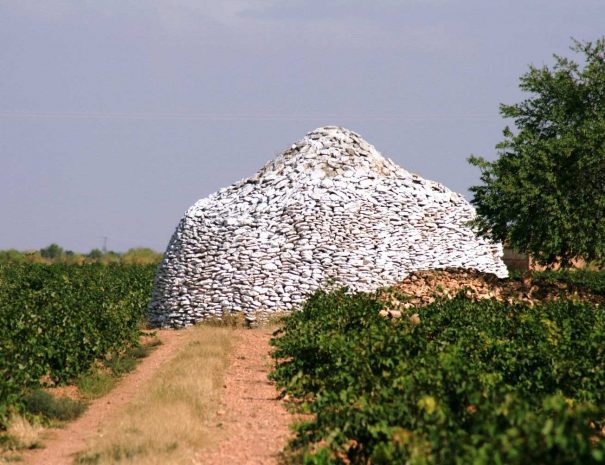
Mancha wine region – wines and history
La Mancha wine region. Type of wines, wine region map, wineries and history of wine production. La Mancha, located South of Madrid and North of Andslusia, is the largest wine region in the world … Read More
History and appelations of wine in Catalonia wine country
Catalonia is an Autonomous Community that looks like a triangle on the most northeastern part of the Iberian Peninsula.
It is bordering France by the Pyrenees to the north and the Autonomous Community of Aragon to the west. There is a short segment of land that is touching Valencia to the south and the east side of Catalonia is covered by the Mediterranean Sea.
The Catalan capital is a vibrant and cosmopolitan city, very well-known all over the world, and even more after organizing the Olimpics in 1992… we are talking about Barcelona! Catalonia is a land of amazing arts, beautiful monuments and gorgeous gastronomy. The mountains, the plains and the sea offer stunning landscapes with unlimited options for tourists. And maybe we could say the same adjectives about its magnificent wines…
The first vines were planted by the Greek more than 2,500 years ago. They created a coastal colony called Emporion (currently Ampurias –Empúries in Catalan language–) for trading purposes. Later on the Romans expanded the wine culture all over Catalonia and Hispania. After the terrible arrival of phylloxera into Europe (XIX Century), Catalonia reinvented itself with one of the most famous sparkling wines worlwide: the Cava! But Catalan wines are much more than that! Let’s see a fast overhaul about it.
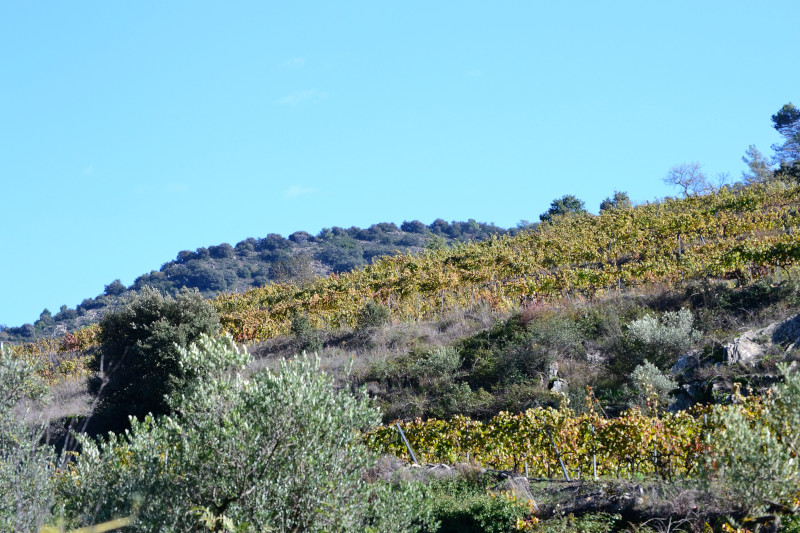
From East to West these are the Catalan wine regions:
It is located on the northeast corner of Catalonia, facing the Mediterranean Sea to the East and the French border to the North. The amount of rain is high and the whole area is under the influence of Tramontana winds (trans-mountainous) so this gives a fresh and fruity character to its wines. The region is subdivided into the High Empordà and the Low Empordà. The allowed grape varieties are Garnacha Blanca, Macabeo and Moscatel de Alejandria for white wines; and Cariñena (Carignan), Garnacha, Syrah, Cabernet Sauvignon, Merlot and Tempranillo (Ull de Llebre) for the red wines. The made-of-Garnacha liqueur wines are also remarkable.
After a 30min drive to the North along the Mediterranean coast from Barcelona, you will get the D.O. Alella. To make white wines they can produce the following types of grapes (varietals): Xarel·lo (Pansa Blanca), Garnacha Blanca, Chardonnay, Macabeo, Parellada, Chenin, and Sauvignon Blanc. For red making they are allowed to produce Pansa Rosada (Xarel·lo Vermell), Picapoll (Piquepoul), Tempranillo (Ull de Llebre), Garnacha, Cabernet Sauvignon, Merlot and Pinot Noir.
Heading southwest from Barcelona (almost 1-hour drive), you will get one of the most famed Catalan wine regions. Penedès shares the same geographic zone with part of the D.O. Cava. The wine region has been traditionally subdivided into High (deepest inland), Medium and Low (coastal) Penedès, but there is one more accurate subdivision in 7 areas: Serra d’Ancosa, Valls des Bitlles Anoia, Conca del Riu Anoia, Conca del Riu Foix, Costers del Montmell, Massis del Garraf i Coster d’Ordal, Marina del Garraf. The allowed white varieties are Macabeo, Xarel·lo, Parellada, Chardonnay and Malvasia (Subirat Parent). The red varieties are Garnacha, Monastrell (Mourvedre), Tempranillo (Ull de Llebre), Cabernet sauvignon, Merlot y Samsó (Cinsaut).
This wine region is located near Manresa which is about 1-hour drive inland towards the northwest of Barcelona. This land has a Mountain-Mediterranean climate so this means they have less rain and more extreme temperatures than in Barcelona for instance. There are two subzones, the higher is called Alt Bages and the lower Pla del Bages (Pla means Plain). The white varieties consist of Macabeo, Picapoll, Parellada, and Chardonnay. The reds are Tempranillo (Ull deLlebre), Merlot, Cabernet Sauvignon and Garnacha.
This wine region has a mild average temperature and a very irregular pluviometry. It is located along the coastline heading southwest from Barcelona and has two main areas: Camp de Tarragona (inland and higher) and Rivera d’Ebre. The allowed white varieties by the Regulatory Counsil are Chardonnay, Garnacha Blanca, Moscatel de Alejandria, Moscatel Frontignan, Parellada, Sauvignon blanc, Malvasia (Subirat parent), Macabeo and Xarel·lo. The allowed reds are Cabernet Sauvignon, Garnacha, Merlot, Monastrell (Mourvedre), Pinot Noir, Samsó (Cinsaut), Syrah and Tempranillo (Ull de Llebre). It should be noted the local liqueur wine that can be sweet or dry rancid. Vermouths are also pretty common within the area.
The Francoli river basin is where the vineyards of the Conca de Barberá are spreading out. The white wine production depends on Parellada, Chardonnay, and Macabeo. The reds could come from Trepat, Tempranillo (Ull de Llebre), Garnacha, Cabernet Sauvignon, Merlot, Pinot Noir and Syrah.
This is the deepest inland wine region in Catalonia and therefore it is higher in altitude than any other one. The climate is Continental, with low rain, more sun exposure, and temperature contrasts. It covers a big surface in comparison with the other Catalan wine regions. Due to this, it is possible to split the region in 6 different subzones: Artesa, Les Garrigues, Pallars Jussà, Raimat, Segrià and Valls del Riu Corb. The allowed white varieties are Albariño, Macabeo, Xarel·lo, Parellada, Chardonnay, Garnacha Blanca, Riesling and Sauvignon Blanc. The allowed reds are Garnacha Negra, Tempranillo (Ull de Llebre), Cabernet Sauvignon, Merlot, Monastrell (Mourvedre), Trepat, Samsó (Cinsaut), Pinot Noir and Syrah.
Before the year this wine region was created, it was belonging as a subzone to the D.O. Tarragona under the name of Falset. The hilly and mountainous conditions make this area more similar to Priorat and because of this, it earned the D.O. label since it could be a transition land between the D.O. Tarragona and the D.O.Ca. Priorat. It is a wine region for powerful and full-body reds made of Garnacha and Cariñena (Carignan) grape varieties.
‘Priorat’ in Catalan, ‘Priorato’ in Spanish and ‘Priory’ in the English language… This is a beautiful hidden land within a mountain range where monks settled their communities in Middle Ages looking for a peaceful place… and for growing vines! But the conditions are really tough: the steep mountains, the rocky environment, the slaty soils (locally called ‘llicorella’) and the vineyards on micro plots along terraces make working here a nightmare! Because of this, the D.O.Ca. Priorat has the highest distinctions as a tribute to the human effort and to the magnificent quality of its wines. This wine region is ‘Calificada’ that means ‘Qualified’ (only Rioja has the same category in Spain) and it is considered a ‘heroic viticulture land’ due to its difficult working and vine-growing conditions (there are four areas in Spain: Priorat –Catalonia–, Ribeira Sacra –Galicia–, Cangas –Asturias– and Hierro Island –Canaries–). The wonderful reds from Priorat are coming from Cariñena (Carignan) and Garnacha grape varieties. In addition to these, it is possible to use Garnacha Peluda, Cabernet Sauvignon, Merlot and Syrah. The whites are made from Garnacha blanca, Macabeo, Pedro Ximenez, Chenin and Viogner. Learn here more about the wines from Priorat
The meaning of its name is ‘Highland’ because this wine region is located inland being the most southern Catalan wine region. It gets either both Continental and Mediterranean climate influence with a low pluviometry. The allowed white varieties by the Regulatory Council of the D.O. are Garnacha Blanca, Macabeo, Parellada, Chardonnay, and Moscatel. The reds are Garnacha, Tempranillo (Ull de Llebre), Cariñena (Carignan), Merlot, Cabernet Sauvignon and Syrah.
Despite of a wine region definition should be a ‘Protected geographical indication that is used to check where the grapes for a wine where have been grown’; this does not work this way in the case of the D.O. Cava which could have this another definition: ‘All that different areas that are making wine (in Spain) following the traditional Champenoise Method’. This wine is called Cava and it could be made in many different locations but 95% is made within Catalonia (we could say that Cava and Penedès regions are superimposed). Having such amount of percentage of the cake, Cava is considered the main ambassador of Catalan wines and has two powerful competitors worldwide: the French Champagne and the Italian Prosecco. By the way, a Cava is a wine ‘Cave’ and probably you know that a natural sparkling wine needs to make a second fermentation within the bottle and a bottle-aging period afterward (no better place than a cave to carry out this process). The varieties to make a white Cava usually are Macabeo, Xarel·lo and Parellada. In the North of Spain (Rioja, Navarra) the Macabeo is called Viura. Two more white options could be Malvasia or Chardonnay. There are some red varieties to make a rosé Cava: Garnacha, Monastrell (Mourvedre), Pinot Noir and Trepat.
This is a modern concept D.O. that covers most of the surface of Catalonia. It was designed to compete on the international markets so it has a larger range of grape varietals and wines to offer. The permited white grapes are Chardonnay, Garnacha Blanca, Macabeo, Moscatel de Alejandria, Parellada and Xarel·lo. The reds are Cabernet Franc, Cabernet Sauvignon, Garnacha, Garnacha Peluda, Merlot, Monastrell (Mourvedre), Pinot Noir, Samsó and Tempranillo (Ull de Llebre).
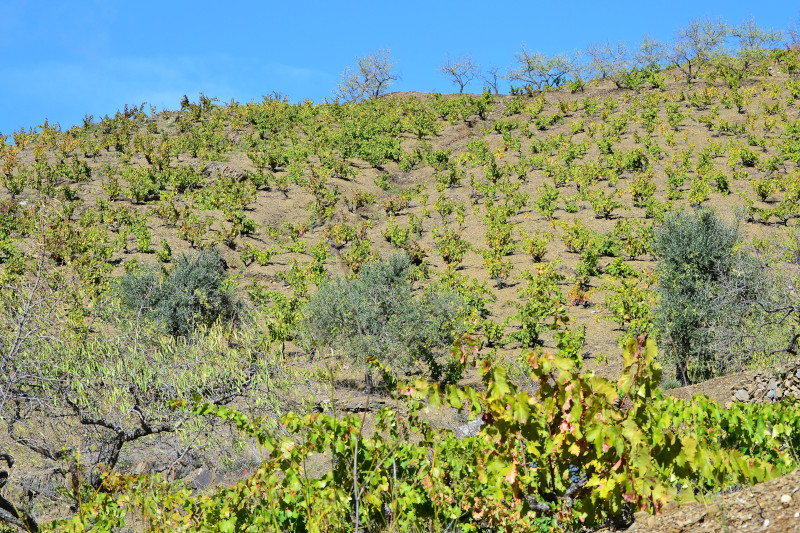

La Mancha wine region. Type of wines, wine region map, wineries and history of wine production. La Mancha, located South of Madrid and North of Andslusia, is the largest wine region in the world … Read More
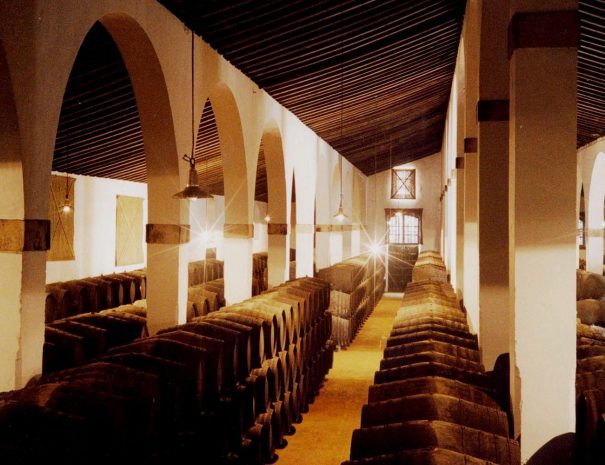
Jerez wine region. Information on itineraries, wine routes, ideas and tips to organise a wine tour in Jerez de la Frontera, San Lucar de Barrameda and El Puerto de Santa María visiting sherry wine producers … Read More
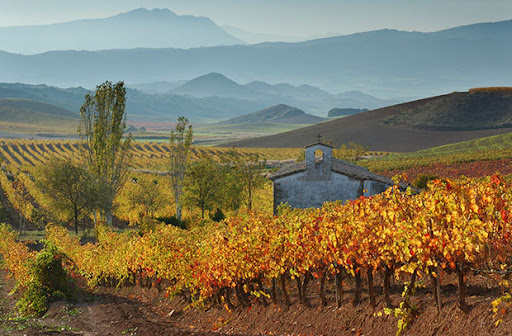
Types of wines in Navarra. history, grapes and sub-regions in the wine region of Navarra, Spain. Navarra wines. Find out about the types of wines produced in Navarra, their history, type of grapes permitted and regulations … Read More
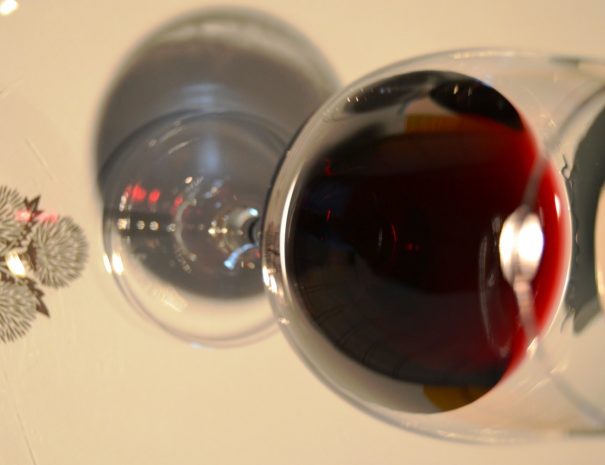
All you want to know about Rioja wines: type of grapes, terroir, history of its wines, price evolution, regulations, size of wineries and much more in this guide to Rioja wines … Read More
is proudly powered by WordPress